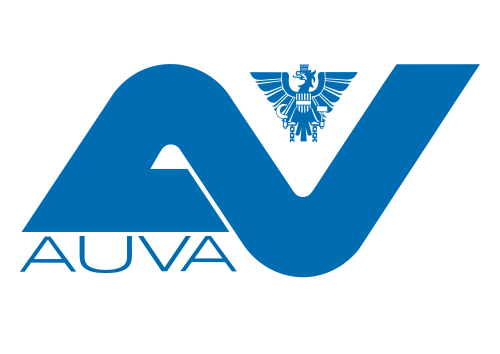
Video Napo – The story of the best signs
Other films featuring the character Napo are available at https://www.napofilm.net/en/napos-films/films?films=all.
The Napo Consortium currently has eight members
– AUVA (Austria), CIOP (Poland), DGUV (Germany), EU-OSHA (Bilbao, Spain), INAIL (Italy), INRS (France), SUVA (Switzerland) and TNO(The Netherlands).








What are safety signs, colors and signals for?
Safety signs (or sound and light signals) are placed and used in workplaces where there is a risk of harm to your health. The signs provide you with instructions and information important to your safety and health. They may warn you of a ban on certain behaviors, give warnings about danger, command you to do something, or inform you about safety (e.g. emergency exit, escape route, etc.) Their advantage is that they are easy to understand even without words. Your employer is responsible for placing and using these signs and is obligated to familiarize you with them.
What do prohibition signs look like?
The prohibition signs are circular in shape with a black pictogram (image) on a white background, a red border and a diagonal stripe. The black pictogram, red border and diagonal stripe occupy at least 35% of the mark area.
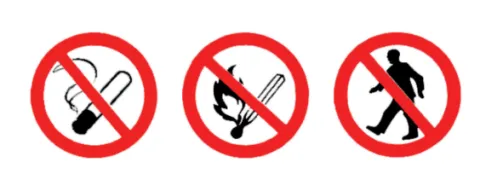
Figure 1: NO SMOKING – NO OPEN FLAME – PEDESTRIAN PASSAGE PROHIBITED

Figure 2: DO NOT USE WATER FOR FIRE EXTINGUISHING – WATER UNSUITABLE FOR DRINKING – UNAUTHORIZED ENTRY PROHIBITED
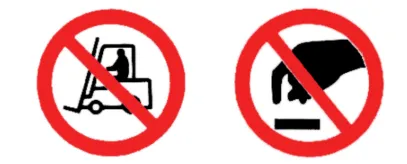
Figure 3: NO OPERATION/ENTRY OF MOTOR VEHICLES – DO NOT TOUCH
What do warning signs look like?
Warning signs are triangular with a black pictogram on a yellow background and a black border. The black pictogram and border occupy at least 50% of the sign's surface.

Figure 4: WARNING, FIRE HAZARDOUS MATERIALS – WARNING, EXPLOSION RISK – WARNING, TOXICITY RISK
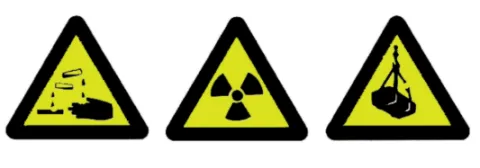
Figure 5: WARNING, CORROSION/BURNS RISK – WARNING, RADIOACTIVE MATERIAL – BEWARE OF SUSPENDED LOAD

Figure 6: RISK OF COLLISION WITH VEHICLE – ELECTRICAL HAZARD – GENERAL WARNING, RISK OF DANGER

Figure 7: DANGEROUS RADIATION – DANGEROUS OXIDIZING MATERIALS – DANGEROUS NON-IONIZING RADIATION

Figure 8: DANGER, STRONG MAGNETIC FIELD – RISK OF TRIPPING – RISK OF FALLING

Figure 9: BIOLOGICAL HAZARD – LOW TEMPERATURE HAZARD – EXPLOSIVE ENVIRONMENT RISK
What do mandatory signs look like?
Mandatory signs are circular with a white pictogram on a blue background; the white pictogram occupies at least 50% of the sign’s surface.

Figure 10: MANDATORY WEARING OF EYE PROTECTION – MANDATORY WEARING OF HEAD PROTECTION – MANDATORY WEARING OF HEARING PROTECTION

Figure 11: MANDATORY WEARING OF RESPIRATOR – MANDATORY WEARING OF FOOT PROTECTION – MANDATORY WEARING OF HAND PROTECTION

Figure 12: MANDATORY WEARING OF PROTECTIVE WORK CLOTHING – MANDATORY WEARING OF FACE PROTECTION – MANDATORY USE OF SAFETY HARNESS
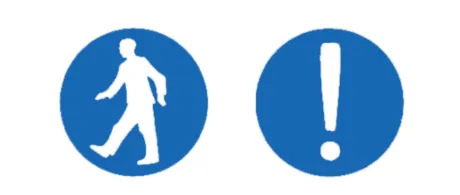
Figure 13: MANDATORY PEDESTRIANS USE THIS PATH – GENERAL COMMAND (ACTION/STATE)
What do informational signs look like?
Informational signs for safety/escape/first aid are rectangular or square with a white pictogram on a green background; the white pictogram occupies at least 50% of the sign's surface.

Figure 14: ESCAPE EXIT (LEFT, RIGHT, DOWN)

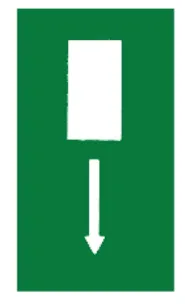
Figure 15: EMERGENCY EXIT / ESCAPE ROUTE

Figure 16: DIRECTIONAL ARROW (DOWN, LEFT, RIGHT, UP) TO THE FIRST AID DEVICE

Figure 17: FIRST AID LOCATION – STRETCHER – SAFETY SHOWER – EYE WASH
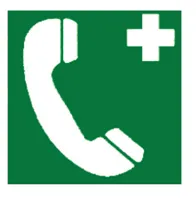
Figure 18: EMERGENCY PHONE FOR FIRST AID OR ESCAPE
Informational signs for fire safety equipment, fire-protection devices, and directions to them are rectangular or square with a white pictogram on a red background; the white pictogram occupies at least 50% of the sign's surface.

Figure 19: FIRE HOSE – FIRE LADDER – FIRE EXTINGUISHER – FIRE ALARM SYSTEM POINT

Figure 20: DIRECTIONAL ARROW (DOWN, LEFT, RIGHT, UP) TO FIRE SAFETY DEVICE

Figure 21: FIRE LIFT
What do signs for collision with obstacles or persons risk or risk of falling look like?
These signs consist of either alternating red and white or yellow and black stripes of equal size at a 45-degree angle. In low visibility conditions, yellow-green photoluminescent material may be used instead of yellow.

How are light and sound signals used?
Light and sound signals indicate when a specific activity should begin or end (e.g., closing and opening remote-controlled doors, starting a machine or line) and are emitted throughout the activity.
Intermittent light is used in the event of a higher danger level or a more urgent need for action or intervention. A variable frequency audible signal is used to indicate a higher level of danger or a more urgent need for action or intervention. A steady sound indicates an evacuation.
How are voice signals used?
Voice signals are used to express a necessary actions. Communication takes the form of simple, understandable short words or sentences. Voice signals must be pronounced correctly in a language that the listener understands and must be sufficiently loud.
Examples and meanings of voice signals:
START – Begin operation.
STOP – Stop, stop moving.
FINISH – Stop the activity.
UP – Lift the load.
DOWN – Lower the load.
FORWARD, BACKWARD, RIGHT, LEFT – Indicates the direction in conjunction with a hand signal.
STOP – Emergency stop.
FAST – Speed up your movement, there is danger.
SLOWLY – Slowly, you are approaching an obstacle/danger.
How are hand signals used?
Hand signals must be accurate, simple, unambiguous. the signaler stands facing the recipient outside the danger zone. They must wear distinguishing features (helmet, vest, arm bands, or flags).
The figures are included in Attachment 2 to this document.
General signals:
Start – beware – start of command
Obrázek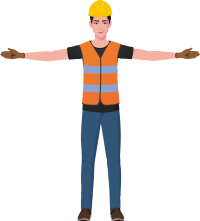
Stop – interrupt – end of controlled movement
Obrázek
End of operation
Obrázek
Vertical movement:
Up
Obrázek
Down
Obrázek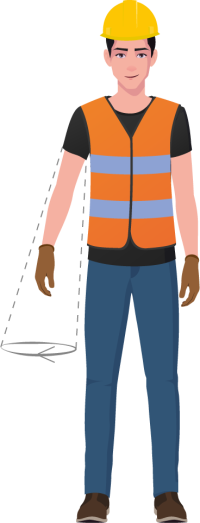
Vertical distance
Obrázek
Horizontal movement:
Forward movement
Obrázek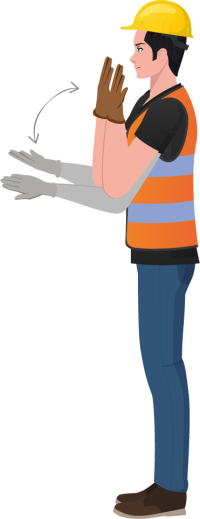
Reverse movement
Obrázek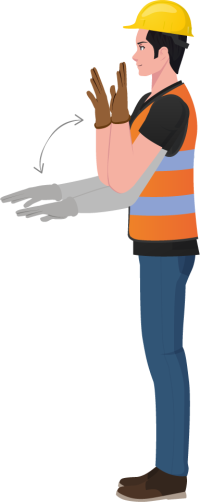
To the right of the signaler
Obrázek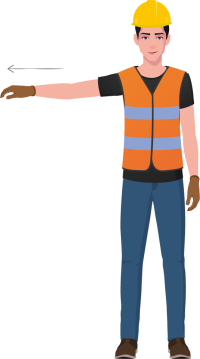
To the left of the signaler
Obrázek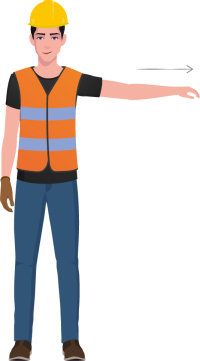
Horizontal distance
Obrázek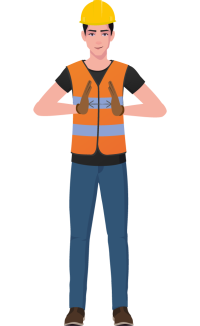
Danger:
Stop – emergency stop
Obrázek
- Fast: all movements faster
- Slow: all movements slower